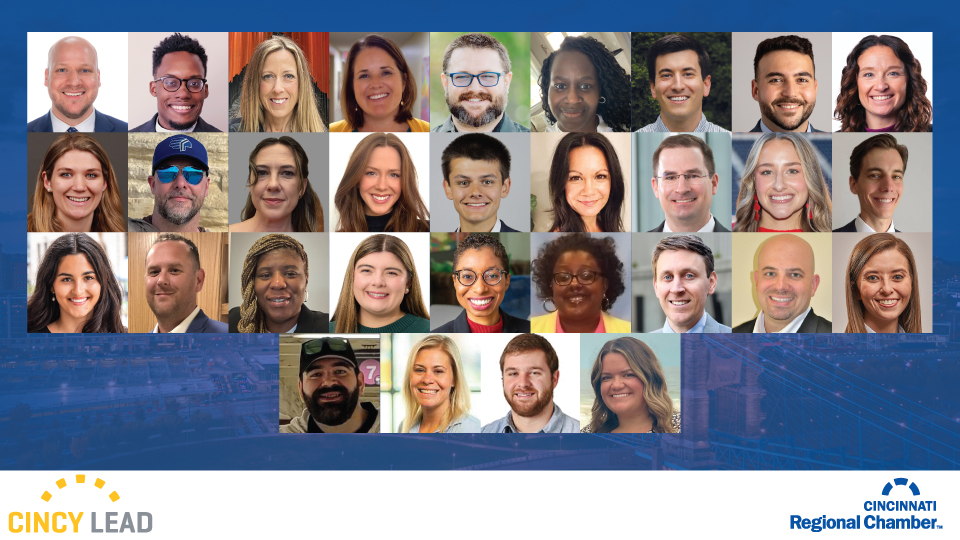1921 – 2013
As he put it, John Gilligan’s early career “yo-yoed” between the world of politics and education, but his training as a Xavier University English literature professor served him well in advocating education reform as governor of Ohio.
“I never planned any of this. It just sort of happened,” Gilligan recalled. “I really set out to be a teacher.”
He was born March 22, 1921, in Cincinnati, with a twin sister, Jeanne Gilligan, and two younger twin brothers, Frank and Harry Gilligan Jr.
Having graduated from St. Xavier High School in 1939, he received his bachelor’s degree from the University of Notre Dame in 1943. Between 1942 and 1945, he became a lieutenant in the U.S. Navy during World War II and served as a destroyer gunnery officer in the Atlantic, Pacific and Mediterranean. He was awarded a Silver Star for gallantry in action at Okinawa.
Upon returning to home from service in World War II, Gilligan went to work for his father, Harry, in the family’s funeral business before enrolling at the University of Cincinnati, earning his master’s in 1947.
Thinking education would be his career, he taught literature at Xavier University from 1948 to 1953. But after being invited to run for Cincinnati City Council as a Democrat, he had a change of heart. “I was always interested in politics,” he recalled. “I always say its America’s favorite spectator sport.”
Gilligan’s interest in politics was fostered by dinner table talk growing up led by his father, who served as chairman of the Charter Committee Reform Group. So he cautiously embarked upon a career in politics, seeking a seat on City Council in 1953. “I thought I would run and get beat in November and be back at Xavier,” he said. “To everybody’s surprise I won.” He served as member of Cincinnati City Council from 1953 to 1963, and was a candidate for Ohio Congressman-at-Large in 1962.
In 1964 he was elected to the 89th Congress as a representative for Ohio’s 1st District, becoming only the second Democrat elected from the 1st Congressional District since the turn of the century. He served in Congress from 1965 to 1967, but his fate on Capitol Hill was sealed before he took office. “Before I was sworn in, I was gerrymandered out of it,” he said. After Republicans redrew his district in the Ohio General Assembly, Gilligan lost his re-election bid to the 90th Congress in 1966 to Republican Robert Taft Jr.
In 1968, he defeated sitting U.S. Sen. Frank J. Lausche in the Democratic primary; however, he lost in the general election to Republican William B. Saxbe.
Undaunted by those two defeats, Gilligan remained active in politics and won the election for the governorship of Ohio in 1970, defeating Republican Roger Cloud, and serving from 1971 to 1975.
“Ohio as a state was in terrible shape,” Gilligan said. “The school system was busted. School districts, large and small across the state, turned out their lights and sent the kids home.” Things were not much better in the arenas of mental health and social services, as well as in protecting the environment.
“I took office shortly after the Cuyahoga River caught fire. Strip-mining was ravaging the state. The mental health institutions were run like prisons and the prisons were run like insane asylums. Ohio was not meeting the basic responsibilities. It was craziness.”
To meet the critical needs of the state, Gilligan’s administration pushed for a graduated state income tax on corporations and individuals to overcome budget shortfalls. The initiative led to fierce politicking by Republicans and 18 months of constant debate across Ohio. Gilligan felt the measure would pass if the public was properly informed. “If people are given the straight dope, they will do the right thing,” he says.
To get the income tax though, Gilligan promised Ohio Sen. Ron Motl of Cleveland that, given Motl’s support of the income tax, the governor’s office would not veto legislation proposing a proposed state lottery. Much to his chagrin, Gilligan oversaw the implementation of the state lottery during his time in office.
As Ohio governor, Gilligan led reforms in education, mental health and environmental concerns. “Of course the big one is we got the schools funded,” he said. “I was interested in education and thought that should be the first priority.”
In 1973, the state legislature and the governor concurred to lower the voting age to eighteen years. “That was because of the Vietnam War and the phrase, ‘If you’re old enough to die, you’re old enough to vote,’” Gilligan said.
Gilligan also secured funding to improve Ohio’s transportation infrastructure. Gilligan sought reelection in 1974, but was defeated by former Gov. James Rhodes in a tight race.
In 1973 he served on the Mikulski Commission for the reform of the delegate selection process of the Democratic Party. At the 1976 Democratic National Convention, he was secretary of the platform committee.
On March 8, 1977, President Jimmy Carter President nominated Gilligan to be administrator of the Agency for International Development, a position he held until 1979. From 1979 to 1986, he served as the director of the Institute for Public Policy. He taught at the University of Notre Dame from 1986 to 1992 and also served as director of the civic issues forum at the University of Cincinnati School of Law.
Gilligan was appointed a fellow of the John F. Kennedy Institute of Politics at Harvard in 1969, and served an 18-month appointment as a fellow at the Woodrow Wilson International Center for Scholars, Washington, D.C., in 1975-76.
In 1999, at age 78, Gilligan was elected to the Board of Education of the Cincinnati Public Schools and recently retired from that position.
In 1945, he married Mary Kathryn Dixon of Cincinnati, who died in October of 1996.
In 2000, Gilligan married Dr. Susan Fremont, who practiced medicine in Loveland. He is the father of four children, including Kathleen Sebelius, who went on to become governor of Kansas and later, United States Secretary of Health and Human Services. They were the first father-daughter pair of governors in the United States.
Among his numerous accolades, in 1979 he was presented the Annual Award for the Outstanding Catholic Layman of the Year by the National Association of Catholic Colleges and Universities. In 1990 he was given the Reinhold Niebuhr Award by the University of Notre Dame as the faculty member whose life and writings best exemplified the lifelong philosophical and theological concerns of Niebuhr, especially in the realm of social justice.
Looking back on his life, Gilligan, a resident of Clifton, said his father Harry “was the most significant influence in my life. My father was of the old school and had certain standards he expected us to live up to. He didn’t boss us around but rather. . .the way he lived his life.”
Of the Great Living Cincinnatian recognition, Gilligan said, “It’s a very nice honor. Not sure how they rolled the dice on it. It will baffle my children.”
John Gilligan died August 26, 2013 at his home in Cincinnati.




